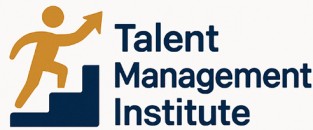
Understanding Mobile Workforce Management Software
Decoding the Complexity of Mobile Workforce Management Tools
In today's fast-paced and digitally driven environment, optimizing workforce management has become a key challenge for organizations across industries. Mobile Workforce Management Software emerges as a powerful solution that enables companies to efficiently manage and support their field employees through a single platform. Understanding the fundamental aspects of this software will help you leverage its capabilities to drive productivity and customer satisfaction.
At its core, mobile workforce management software acts as a centralized hub that streamlines various activities such as scheduling, job assignments, and time tracking. These management solutions integrate various features, such as real-time communication and performance management, to ensure that both employees and managers have the necessary tools for efficient service delivery. By offering mobile apps, these platforms extend their functionality to field service personnel, enabling them to access essential information and communicate effectively on the go.
Key features of mobile workforce management software include work order management, real-time location tracking, and customer service management. These components work in tandem to ensure that employees can deliver exceptional service without the administrative headaches. With the aid of well-structured scheduling tools and real-time updates, businesses can align resources with field demands, ensuring optimal service management and customer satisfaction.
For organizations aiming to enhance their service management capabilities, adopting a mobile workforce management system represents the best opportunity to unify and automate workforce-related tasks. Equipped with robust tools and functionalities, companies can streamline operations and equip their mobile employees to perform at their best. As organizations endeavor to improve their workforce management strategies, understanding and utilizing these platforms effectively can bring significant advantages in employee satisfaction, resource optimization, and job performance.
Streamlining Operations and Boosting Productivity
Optimize Operations with Advanced Mobile Solutions
In today's competitive landscape, implementing cutting-edge mobile workforce management software can significantly streamline operations and enhance productivity. For businesses, particularly those managing field service teams, utilizing advanced management tools can transform the efficiency of day-to-day operations and customer service delivery. By leveraging mobile workforce solutions, organizations can effectively manage scheduling and time tracking in real-time. The ability for management and field team leaders to access scheduling tools ensures that the right workers are dispatched to the right jobs at the right time. This not only minimizes downtime and travel time but also optimizes resource allocation, leading to improved service quality and customer satisfaction. Real-time communication stands out as another key feature of these mobile apps, facilitating seamless interaction between managers and mobile employees. This ensures everyone is updated with the latest job information and customer requirements, thereby reducing errors and enhancing overall performance management. Moreover, mobile workforce management software typically integrates with other service management solutions, providing a comprehensive view of field operations. These integrations enhance performance tracking, allowing management to assess productivity levels, identify bottlenecks, and make data-driven decisions to refine processes. Embracing these technologies empowers service management teams to excel in customer experience by ensuring efficient job execution and timely service delivery, reinforcing the industry's shift towards mobile solutions as a cornerstone of modern workforce management.Improving Communication and Collaboration
Fostering Seamless Interaction and Coordination
Mobile workforce management software facilitates efficient and effective communication and collaboration among field workers and management personnel. With the advent of real-time communication capabilities, teams can transmit vital information swiftly and accurately. Efficient communication tools within these management solutions allow teams to update each other on job progress and adjust field service schedules as needed. This timely sharing of information leads to a more accurate decision-making process, optimizing service delivery and enhancing customer satisfaction. Moreover, real-time tracking features empower workforce management by providing managers immediate insight into employees’ locations and progress. This level of transparency ensures that mobile workers are supported throughout their workday, and any arising issues are promptly addressed. As a result, management can enhance overall performance management, aligning with the primary goal of improving customer experience. Such management tools not only streamline internal communication but also play a key role in ensuring workers are aligned with the company's objectives. This alignment fosters a collaborative environment, which is crucial for maintaining high levels of service management and delivery. In the evolving landscape of workforce management, adopting these advanced software solutions permits businesses to remain agile and responsive. By integrating with relevant tools, organizations can continue to build robust communication networks, invaluable in promoting cohesion among mobile employees. For additional insights into similar technological advancements, consider exploring AI training roles and their impact on workforce management at the Talent Management Institute blog.Enhancing Employee Satisfaction and Retention
Boosting Employee Morale and Loyalty
Mobile workforce management solutions play a critical role in enhancing employee satisfaction and retention. By providing mobile employees with the flexibility and tools they need to perform their job efficiently, employers can foster a more positive work environment. Utilizing advanced management software allows employees to access key features and tools through an intuitive mobile app. This enhances how they manage their own time, schedule their work, and communicate with their teams in real time. Empowering employees with such capabilities reduces friction, improves job satisfaction, and fosters a sense of loyalty towards their organization. In addition, workforce management tools facilitate effective performance management by offering real-time tracking and feedback mechanisms. These management solutions allow employees to receive timely recognition for their efforts and areas for improvement, contributing to their professional development and engagement. Furthermore, the integration of efficient field service management and customer service delivery directly contributes to increased customer satisfaction. This, in turn, mutually benefits both the employees' work environment and the company’s reputation. Happy customers lead to happier employees, creating a virtuous cycle that retains talent and enhances service quality. Ultimately, organizations that strategically integrate mobile workforce management tools see improved employee morale and diminished turnover rates. This commitment to workforce satisfaction not only boosts loyalty but also acts as a catalyst for continuous improvement in service and operational excellence.Overcoming Challenges in Implementation
Conquering Implementation Hurdles
Introducing mobile workforce management software to your field service operations can be transformative but comes with its own set of challenges. To ensure a successful transition, it is essential to understand these obstacles and develop strategies to overcome them. One of the primary challenges is resistance to change among employees. Workers might be accustomed to traditional methods and reluctant to adopt new technology. A well-planned change management strategy, involving comprehensive training and clear communication, can help alleviate these concerns. Demonstrating the software’s key features and explaining the benefits of real-time tracking and management solutions can foster acceptance. Another issue can be the integration of mobile management tools with existing systems. It is vital to choose a software solution that is compatible and can seamlessly integrate with your current infrastructure. Scheduling and time communication tools should sync with existing platforms to avoid data silos. Ensuring robust data security is also crucial. Mobile employees accessing the system need assurance that their information is protected. Implementing the best practices in data encryption and cybersecurity will safeguard sensitive work and customer data, enhancing trust. Field service management should also consider the technological readiness of the team. Ensuring mobile workers have the necessary devices and internet access is essential for optimal performance management. Additionally, providing support during the transition phase, such as a responsive customer service team, can help resolve any technical issues quickly, ensuring steady service delivery and minimizing downtime during the implementation phase. By addressing these challenges head-on, companies can unlock the full potential of their workforce management software, leading to improved job satisfaction and customer experience.Future Trends in Mobile Workforce Management
Embracing Technological Advancements
The future of mobile workforce management is deeply intertwined with technological advancements. As businesses continue to evolve, the integration of artificial intelligence and machine learning into management software is becoming increasingly prevalent. These technologies offer predictive analytics, enabling managers to make data-driven decisions and optimize scheduling and resource allocation. This not only enhances efficiency but also improves customer satisfaction by ensuring timely service delivery.
Focus on Real-Time Data and Analytics
Real-time data tracking is set to become a cornerstone of effective workforce management. With the rise of IoT devices and advanced mobile apps, managers can monitor field service activities in real time, allowing for immediate adjustments and improved performance management. This capability ensures that mobile workers are supported with the best tools to complete their jobs efficiently, ultimately boosting productivity and customer experience.
Enhancing Employee Experience
Future trends also emphasize the importance of enhancing the employee experience. Mobile workforce management solutions are increasingly focusing on user-friendly interfaces and features that promote employee satisfaction. By providing mobile employees with intuitive management tools, companies can foster a more engaged and motivated workforce, leading to higher retention rates and better service outcomes.
Integration and Customization
As businesses strive for seamless operations, the demand for customizable and integrative management solutions is on the rise. Future software developments will likely focus on offering flexible platforms that can be tailored to specific business needs, allowing for better integration with existing systems. This adaptability ensures that companies can maintain a competitive edge by leveraging the most effective management strategies tailored to their unique requirements.
Security and Compliance
With the increasing reliance on mobile workforce management software, ensuring data security and compliance with industry regulations is paramount. Future trends will likely see enhanced security features being integrated into management solutions, safeguarding sensitive information and maintaining trust with both employees and customers. As businesses navigate these changes, staying informed and proactive in adopting new technologies will be key to maintaining a successful and efficient mobile workforce.



-large-teaser.webp)









